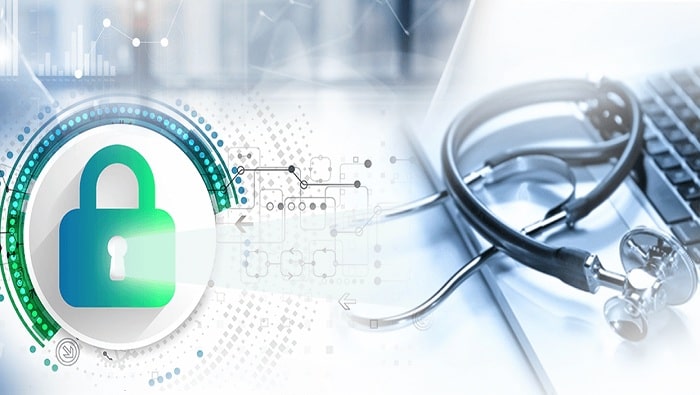The healthcare industry, like any other, is targeted by cybercriminals all over the world. Strong cybersecurity is critical for the protection of sensitive data and critical IT applications and services in healthcare organizations. Cybersecurity challenges in the healthcare sector are numerous as they work to secure these data and systems against cyber threats.
Cybercriminals continue to exploit similar flaws in healthcare cybersecurity practices that include high-value patient data and have a low tolerance for downtime. The healthcare industry has seen a 55% increase in cybersecurity threats over the last few years. Cyber threats in the healthcare industry will continue to disrupt unless providers take proper network security measures. Healthcare businesses are the main targets of cybercrime. Unlike large healthcare providers with the resources to develop effective cyber defense plans, small healthcare providers are more vulnerable to hackers. Among the top cybersecurity challenges that the healthcare sector face is the following:
-
Phishing
A phishing attack tricks users into disclosing passwords or other personal information that attackers can use against them. Phishing attacks are carried out through targeted communications, such as email, messaging, and so on. Attackers send emails or messages containing links to malicious websites, encouraging users to click on them. When a user clicks on the link, they may unknowingly download malware, allowing the attacker to access sensitive data.
-
Ransomware Attacks
Ransomware is the most dangerous new-age cyberattack that healthcare professionals face. These attacks are one of the most dangerous attacks affecting hospitals as cyber criminals infect hospital systems with malware and render patient data inaccessible until the victim pays the ransom demanded. Cybercriminals carry out these attacks by infecting computers with trojan viruses or by sending phishing emails.
-
Data Breaches
Data breaches are one of the most significant challenges for this industry as it is critical to focus on encryption to ensure that patient data is not leaked. The Health Insurance Portability and Accountability Act (HIPAA) establishes data security standards and mandates that physicians secure sensitive patient data stored electronically. In most cases, healthcare providers who fail to follow regulations become victims of data breaches.
-
DDoS Attacks
DDoS attacks are intended to prevent users from accessing applications or systems by flooding them with more traffic than they can handle. DDoS attacks are increasingly being used by cybercriminals as part of ransom campaigns, sometimes in conjunction with ransomware or data theft.
DDoS attacks do not pose the same data exfiltration risks as ransomware attacks, but they do cause the same operational disruption.
Vulnerability of Legacy Systems: Legacy systems, such as outdated workstations and networked medical equipment, are frequently used by healthcare organizations. These systems frequently had unpatched vulnerabilities that attackers could exploit. This opens the door to a massive cyberattack because the outdated system lacks protection against modern-day malware and viruses.
Insecure Medical Equipment and Devices: Cybercriminals could exploit vulnerabilities in medical equipment and devices to gain complete control and carry out cyberattacks. Such attacks can affect the clinical performance of equipment, change test results, or cause other potentially disastrous changes. Because most hospitals fail to recognize the importance of granting secure access to their connected devices, cybercriminals exploit vulnerabilities and conduct major cyberattacks.
Insider Threats: Hospital employees can also be the perpetrators of cyberattacks. Unhappy insiders or contractors with access to critical resources carry out cyberattacks by stealing sensitive patient data or by attempting to disrupt the network. To avoid these attacks, privileged access must be restricted. These types of attacks are known as insider threats, and they have increased by 47% in the last few years.
Cloud-based Threats: One of the emerging challenges for the healthcare industry is cloud threats. As more healthcare organizations use cloud storage to store data, cybercriminals have begun to target cloud services in healthcare. They employ techniques such as brute force login attempts and phishing attacks to exploit flaws in healthcare organizations’ cloud security practices. To avoid cloud threats, it is necessary to follow HIPAA regulations.
Limited Budget: Healthcare providers have a limited budget because they must devote the majority of their resources to patient care, and cybersecurity may not appear to be a priority when allocating limited resources. A disjointed and inefficient security architecture can also quickly deplete resources as businesses pay for overlapping and redundant security solutions or face the costs of a successful data breach or other security incidents.
Lack of Awareness: Healthcare organizations must raise employee awareness of cybersecurity threats and assist them in understanding the risks involved. Raising awareness will assist employees in distinguishing between a legitimate and a fraudulent website. They may also exercise caution when downloading attachments. Healthcare organizations must enforce advanced password policies so that employees do not create passwords that are easy to guess.




